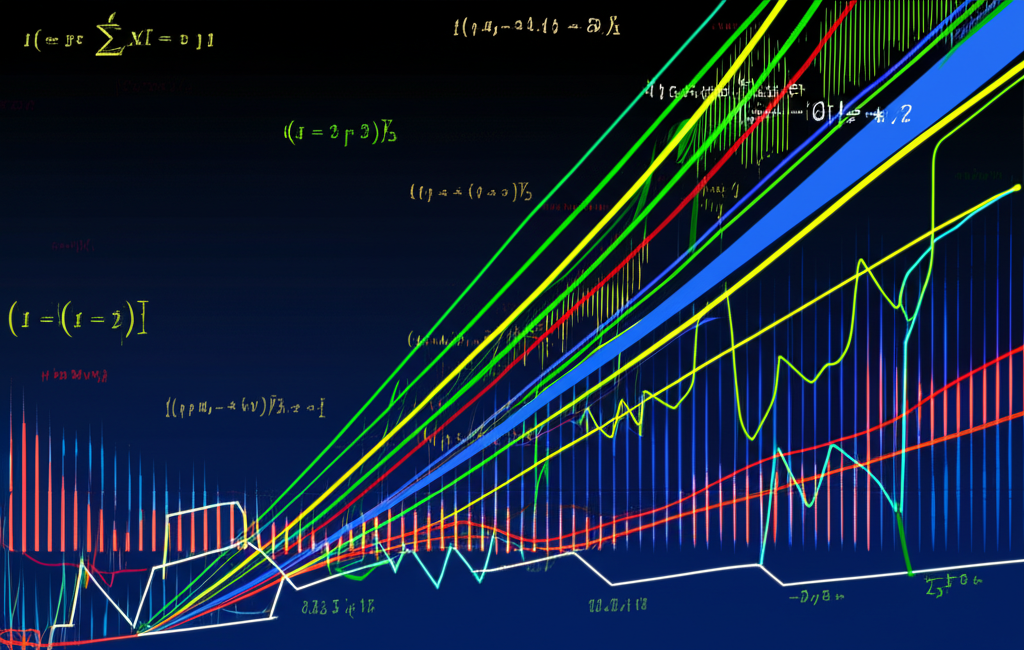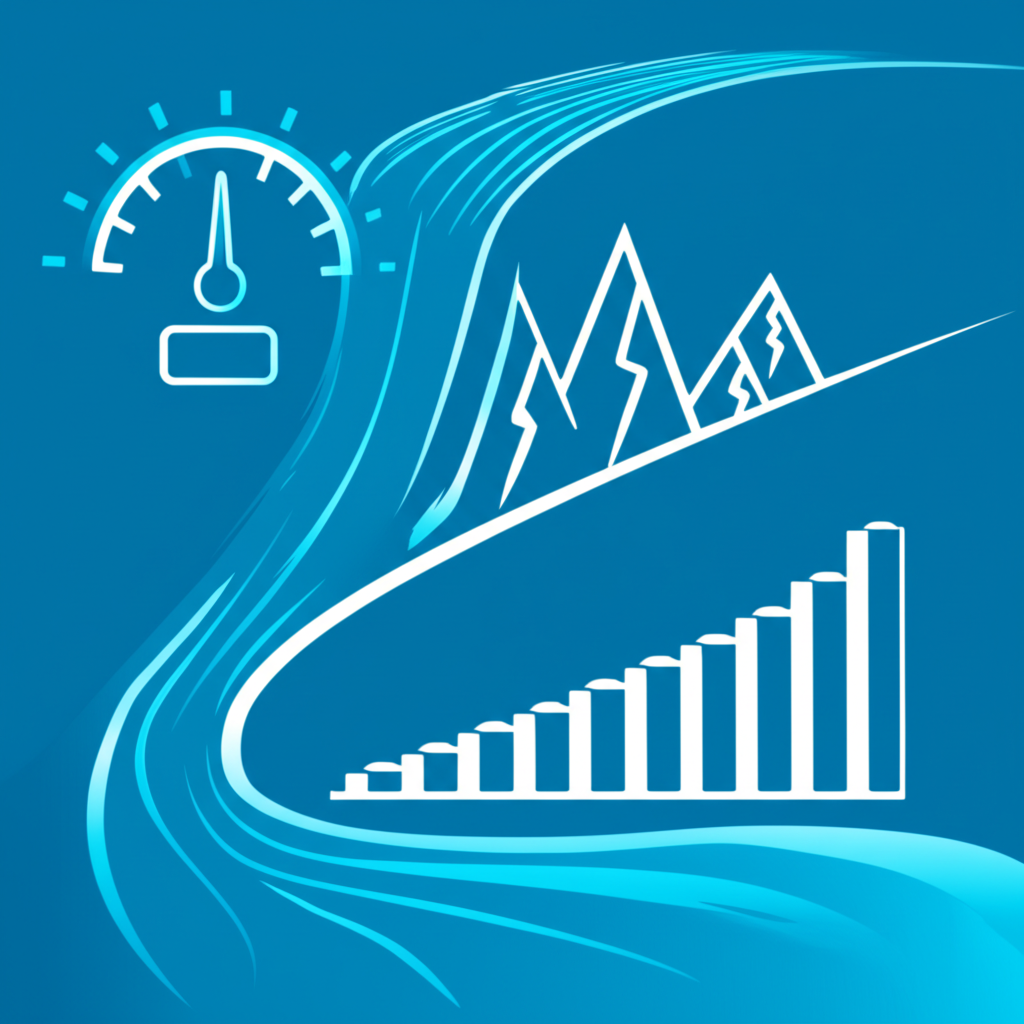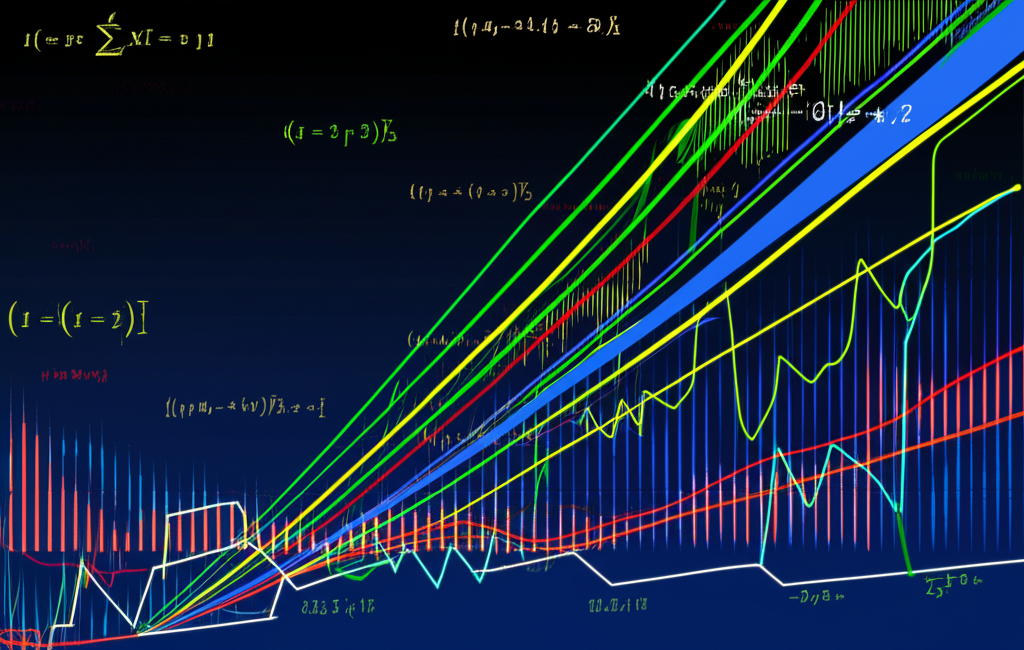Trading Indicators Explained: Types, Uses, and How to Avoid Common Pitfalls

Introduction: What Are Trading Indicators?
At the heart of technical trading lies a powerful set of tools known as trading indicators. These are mathematical calculations derived from a security’s price, volume, or open interest, typically displayed as lines or histograms superimposed on price charts. Rather than interpreting raw price movements alone, traders use these tools to uncover patterns, recognize trends, and anticipate potential shifts in market direction. By converting complex market data into visual signals, indicators make it easier to navigate the often chaotic world of financial markets. Whether you’re analyzing stocks, forex, or cryptocurrencies, these tools help reveal the underlying rhythm of price action, turning noise into clarity. They don’t offer guarantees—but when used wisely, they can significantly improve the odds of making informed and timely decisions.

The Core Purpose: Why Do Traders Use Indicators?
So why do traders rely so heavily on these tools? The answer lies in human psychology and market complexity. Markets move fast, and price fluctuations can be overwhelming. Indicators simplify this chaos by highlighting key aspects of market behavior—trend direction, momentum strength, volatility levels, and the force behind price moves.
For instance, a rising trend might look promising, but is it sustainable? An indicator like the Relative Strength Index (RSI) can reveal whether the move is overextended. Similarly, a sudden spike in volume might signal institutional interest, and tools like On-Balance Volume (OBV) help confirm this. Beyond identifying opportunities, indicators also play a critical role in risk management. By signaling when a market is becoming overbought or unusually volatile, they allow traders to adjust position sizes or tighten stop-losses.
It’s important to remember, though, that no indicator predicts the future with certainty. Instead, they offer a probabilistic edge—clues based on historical patterns. Used alongside price action and market context, they become part of a disciplined strategy, not a shortcut to guaranteed profits.
Categorizing Trading Indicators: Understanding the Main Types

To use indicators effectively, it helps to understand how they’re grouped. Each category serves a different analytical purpose, and combining them thoughtfully can lead to stronger trade decisions. Broadly speaking, trading indicators fall into four core types: trend, momentum, volatility, and volume. Mastering the function of each allows traders to build a well-rounded analysis framework.
Trend Indicators: Following the Market’s Direction
Trend indicators are the compass of technical analysis. They help answer the most fundamental question: which way is the market moving? By smoothing out short-term price fluctuations, these tools reveal the dominant direction—up, down, or sideways.
The most widely used trend indicators include Moving Averages (both Simple and Exponential), which plot the average price over a set period. A rising moving average suggests upward momentum, while a declining one points to weakness. Another key tool is the Average Directional Index (ADX), which doesn’t tell you the direction of the trend but instead measures its strength. An ADX reading above 25 typically indicates a strong trend, whether bullish or bearish. According to Investopedia, trend-following indicators are among the most popular because they provide a clear visual narrative of market direction, helping traders stay aligned with the path of least resistance.
Momentum Indicators: Measuring the Speed of Price Change
While trend indicators show *where* price is going, momentum indicators reveal *how fast* it’s getting there. These tools focus on the rate of price change, helping traders spot when a move is gaining strength or starting to lose steam.
A classic example is the Relative Strength Index (RSI), which oscillates between 0 and 100. Readings above 70 suggest a security may be overbought—priced too high too quickly—while levels below 30 indicate oversold conditions, potentially signaling a bounce. Another powerful momentum tool is the Moving Average Convergence Divergence (MACD), which tracks the relationship between two moving averages. When the MACD line crosses above its signal line, it’s often interpreted as bullish momentum building. The Stochastic Oscillator, meanwhile, compares a security’s closing price to its recent trading range, helping identify turning points before they’re obvious on the price chart. These indicators are particularly useful in ranging markets, where trends are absent, and reversals are frequent.
Volatility Indicators: Gauging Market Fluctuations
Volatility is a measure of how much and how quickly prices swing over time. High volatility means sharp, erratic moves—common during news events or market uncertainty. Low volatility suggests stability, often preceding a breakout. Understanding this ebb and flow is crucial for timing entries and managing risk.
Bollinger Bands are among the most recognizable volatility tools. They consist of a central moving average and two outer bands that expand and contract based on standard deviations from the mean. When the bands narrow—a phenomenon known as a “squeeze”—it often signals that a significant price move is imminent. Traders watch for breakouts from these tight bands as potential entry points. Another essential tool is the Average True Range (ATR), which calculates the average price range over a set period. Unlike directional indicators, ATR doesn’t predict price movement—it simply quantifies how much movement is occurring. This makes it invaluable for setting stop-loss levels and position sizing, especially in fast-moving markets.
Volume Indicators: Confirming Price Action
Price tells you what’s happening; volume tells you how much conviction is behind it. A price increase on low volume may be a false move, while the same increase on high volume suggests strong buyer interest. Volume indicators help distinguish between meaningful moves and market noise.
The most basic form is the volume histogram, which appears beneath most price charts and shows the number of shares or contracts traded per period. A surge in volume during a breakout, for example, confirms the move’s legitimacy. On-Balance Volume (OBV) takes this a step further by tracking cumulative volume flow. It adds volume on up days and subtracts it on down days, creating a running total that reflects buying and selling pressure. A rising OBV line confirms an uptrend, while a falling one warns of distribution. When price and OBV move in sync, the trend is strong. When they diverge—say, price hits a new high but OBV doesn’t—it can signal weakening momentum and a potential reversal.
Popular Trading Indicators in Detail: How They Work

Understanding how individual indicators function is key to applying them effectively. Let’s explore some of the most widely used tools and how traders interpret their signals.
Moving Averages (MA)
Moving Averages are foundational in technical analysis. They smooth price data to create a single flowing line, making trends easier to identify. The Simple Moving Average (SMA) treats all periods equally, while the Exponential Moving Average (EMA) gives more weight to recent prices, making it more responsive to new information.
Traders often use moving averages to define support and resistance levels or to generate crossover signals. For example, when a shorter-term EMA (like the 50-day) crosses above a longer-term one (like the 200-day), it’s known as a “golden cross” and is seen as a bullish signal. Conversely, a “death cross” occurs when the 50-day crosses below the 200-day, often signaling the start of a downtrend. These crossovers aren’t foolproof, but they provide a disciplined way to enter or exit positions based on trend shifts.
Relative Strength Index (RSI)
Developed by J. Welles Wilder, the Relative Strength Index (RSI) is one of the most popular momentum oscillators. It measures the speed and magnitude of recent price changes on a scale from 0 to 100. While the standard overbought and oversold thresholds are 70 and 30, experienced traders often adjust these based on market conditions—using 80/20 in strong trends, for instance.
Beyond extreme readings, RSI is powerful for spotting divergences. If price makes a new high but RSI fails to surpass its previous peak, it suggests weakening upward momentum and a possible reversal. This kind of early warning can be invaluable, especially when combined with other signals.
Moving Average Convergence Divergence (MACD)
The MACD combines trend and momentum analysis into a single, versatile tool. It consists of three components: the MACD line (the difference between the 12-day and 26-day EMAs), the signal line (a 9-day EMA of the MACD line), and a histogram that shows the gap between them.
When the MACD line crosses above the signal line, it generates a bullish signal; when it crosses below, it’s bearish. The histogram adds nuance—its height reflects the strength of momentum, and shrinking bars can warn of an upcoming crossover. Traders also watch for MACD divergences, similar to RSI, to spot potential reversals before they appear on the price chart.
Bollinger Bands
Created by John Bollinger, this volatility-based indicator uses a 20-day SMA as its center line, with upper and lower bands set two standard deviations away. The bands naturally expand during volatile periods and contract during calm ones.
A common trading strategy involves the “Bollinger Band squeeze,” where narrowing bands suggest low volatility and the potential for a sharp breakout. Traders often wait for price to close outside the bands, combined with a volume spike, as a confirmation signal. Another approach is mean reversion: buying near the lower band in an uptrend or selling near the upper band in a downtrend. However, in strong trending markets, price can “ride the bands,” so context is critical.
Stochastic Oscillator
The Stochastic Oscillator compares a security’s closing price to its price range over a specific period, usually 14 bars. Like RSI, it oscillates between 0 and 100, with readings above 80 considered overbought and below 20 oversold.
What sets Stochastic apart is its dual-line structure: the %K line (the main oscillator) and the %D line (a moving average of %K). Crossovers between these lines generate trade signals—bullish when %K crosses above %D, bearish when it crosses below. Traders also watch for divergences and “hook” patterns near the extremes for early reversal clues. Because it reacts quickly, Stochastic is favored by day traders and those operating in range-bound markets.
Average Directional Index (ADX)
ADX doesn’t tell you whether a trend is up or down—it tells you how strong it is. Ranging from 0 to 100, readings above 25 suggest a strong trend, while values below 20 indicate a weak or choppy market. ADX is often used alongside the +DI and -DI lines, which show the direction of positive and negative price movement.
When +DI crosses above -DI and ADX is rising, it confirms a strengthening uptrend. Conversely, when -DI crosses above +DI with high ADX, it signals a strong downtrend. This combination helps traders avoid using trend-following strategies in sideways markets, where they’re likely to generate false signals.
The Benefits of Using Trading Indicators
Despite their limitations, trading indicators offer tangible advantages. First, they bring objectivity to decision-making. Instead of relying on gut feelings, traders can base entries and exits on measurable data. This reduces emotional interference, one of the biggest obstacles to consistent performance.
Second, indicators can act as early warning systems. Divergences, breakouts, and crossovers often appear before major price moves, giving traders a head start. Third, they provide confirmation. A breakout above resistance is more credible if accompanied by rising volume and a bullish MACD crossover. This layering of signals increases the probability of success.
Indicators also support risk management. Volatility tools like ATR help set realistic stop-loss levels, while volume analysis confirms whether a move has staying power. Finally, their adaptability makes them useful across timeframes and markets. Whether you’re scalping forex or investing in long-term equities, indicators can be fine-tuned to match your strategy.
Limitations and Common Misconceptions: Do Indicators Always Work?
No tool is perfect, and trading indicators are no exception. The biggest misconception is that they predict the future. In reality, most are lagging—they reflect past data. A moving average can’t anticipate a sudden news event; RSI can stay overbought for weeks during a strong rally.
False signals are common, especially in sideways or choppy markets. A death cross might appear, only for price to reverse and surge higher. Over-optimizing indicators—tweaking parameters to fit past data perfectly—can lead to curve-fitting, where a strategy works in backtests but fails in live trading.
Another pitfall is indicator overload. Cluttering a chart with ten different tools can create confusion and conflicting signals. Worse, some traders ignore price action entirely, treating indicators as oracle-like predictors. But no indicator operates in a vacuum. A stock might be technically oversold, but if earnings collapse, no RSI reading will save the trade.
The key is balance. Indicators should complement—not replace—core analysis. They work best when integrated with support/resistance levels, candlestick patterns, and broader market context.
Beyond Single Signals: Strategies for Combining Indicators
One of the most effective ways to improve accuracy is by combining indicators from different categories. This multi-dimensional approach helps filter noise and confirm signals.
For example:
– **Trend + Momentum:** Use a 200-day EMA to identify the overall trend, then enter only when RSI pulls back to 40–50 in an uptrend. This avoids buying at overbought levels.
– **Trend + Volatility:** In a strong uptrend, watch for a Bollinger Band squeeze. A breakout above the upper band on high volume could signal a powerful continuation move.
– **Momentum + Volume:** A MACD crossover carries more weight if it’s confirmed by rising volume. If volume is flat or declining, the signal may lack conviction.
The goal isn’t to stack indicators but to build a cohesive system. For instance, a swing trader might use:
1. ADX to confirm a strong trend,
2. MACD for entry timing,
3. ATR to set stop-loss distance.
This layered method increases confidence and reduces reliance on any single signal.
Choosing the Right Indicators for Your Trading Style and Market
The best indicator depends on your timeframe, personality, and market environment.
– **Day Traders** need fast, responsive tools. Short-period EMAs (e.g., 9 or 20), Stochastic, and RSI are ideal for capturing intraday swings. Volume profiles and tick data can add further precision.
– **Swing Traders** often use mid-term indicators like the 50-day MA, MACD, and Bollinger Bands to catch multi-day moves. They benefit from holding through minor noise while riding stronger trends.
– **Long-Term Investors** focus on broader trends. The 200-day moving average is a classic benchmark for bull and bear markets. ADX and monthly RSI help assess trend health over time.
Market conditions also dictate effectiveness. Trend-following tools shine in strong directional markets but struggle in consolidation. In sideways ranges, oscillators like RSI and Stochastic excel at identifying reversals.
The smartest traders don’t just pick indicators—they test them. Backtesting on historical data and paper trading in real-time markets are essential steps. They reveal whether a strategy has an edge and how it performs under stress. Platforms like BabyPips emphasize that backtesting builds confidence and prevents costly mistakes in live trading.
Conclusion: Integrating Indicators into a Robust Trading Strategy
Trading indicators are not magic formulas—they are analytical aids designed to enhance decision-making. When used with discipline and context, they transform raw market data into actionable insights. They help identify trends, gauge momentum, measure volatility, and confirm the strength of price moves.
But their real power emerges not in isolation, but as part of a complete strategy. The most successful traders combine indicators with price action analysis, risk management, and an understanding of market psychology. They avoid overfitting, resist the temptation to chase every signal, and stay flexible across different market environments.
Continuous learning and adaptation are key. Markets evolve, and so must your approach. By treating indicators as tools rather than answers, and by grounding your strategy in both logic and experience, you position yourself not just to survive, but to thrive in the dynamic world of trading.
What is the fundamental purpose of a trading indicator?
The fundamental purpose of a trading indicator is to help traders analyze past market data (price, volume, etc.) to gain insights into market behavior, identify potential trends, measure momentum, and forecast future price movements. They translate raw data into visual and statistical signals to aid decision-making.
What are the main categories of technical trading indicators?
The four main categories of technical trading indicators are:
- Trend Indicators: Identify the direction and strength of market trends (e.g., Moving Averages, ADX).
- Momentum Indicators: Measure the speed and strength of price changes, often spotting overbought/oversold conditions (e.g., RSI, MACD, Stochastic Oscillator).
- Volatility Indicators: Gauge the degree of price fluctuations (e.g., Bollinger Bands, ATR).
- Volume Indicators: Provide insight into the conviction behind price movements (e.g., On-Balance Volume, raw Volume).
Which trading indicators are considered best for identifying market trends?
For identifying market trends, Moving Averages (Simple and Exponential) are widely considered among the best. They smooth out price data to clearly show the direction of the trend. The Average Directional Index (ADX) is also excellent for measuring the *strength* of a trend, although it doesn’t indicate the direction itself.
Can trading indicators predict future price movements with certainty?
No, trading indicators cannot predict future price movements with certainty. They are based on historical data and provide probabilities and insights into potential future behavior, but they are not infallible. Market dynamics are influenced by numerous factors, and indicators can generate false signals or lag behind actual price changes.
How do I choose the right trading indicators for my specific trading style?
Choosing the right indicators depends on your trading style and market conditions:
- Day Traders: Often prefer fast-acting indicators like short-period MAs, RSI, and Stochastic for quick signals.
- Swing Traders: May use mid-term MAs, MACD, and Bollinger Bands to capture multi-day swings.
- Long-Term Investors: Typically rely on longer-period MAs and broader trend indicators.
It’s crucial to backtest indicators on historical data and practice on a demo account to find what works best for you.
What are some common mistakes traders make when using indicators?
Common mistakes include:
- **Over-reliance:** Relying solely on indicators without considering price action or fundamental analysis.
- **Over-optimization:** Tuning indicators too perfectly to historical data, leading to poor live performance.
- **Using too many indicators:** Cluttering charts and creating conflicting signals.
- **Ignoring market context:** Using trend-following indicators in range-bound markets or vice-versa.
- **Misinterpreting signals:** Not fully understanding how an indicator works or what its signals truly mean.
Is it better to use a single indicator or combine multiple indicators in trading?
It is generally better to combine multiple indicators, especially from different categories (e.g., a trend indicator with a momentum indicator). This approach provides confirmation for signals, reduces false positives, and offers a more comprehensive view of market dynamics. However, avoid using too many, as this can lead to analysis paralysis.
Do trading indicators work in all market conditions (e.g., trending vs. consolidating)?
No, trading indicators do not work equally well in all market conditions. Trend-following indicators are most effective in trending markets, while momentum and volatility indicators (like RSI or Bollinger Bands) are often better suited for identifying trading opportunities within consolidating or range-bound markets. Adapting your indicator selection to the prevailing market condition is key.
What is the difference between a lagging and a leading indicator?
The difference lies in their timing relative to price movements:
- **Lagging Indicators:** Follow price action and confirm trends that are already established. Most common indicators like Moving Averages are lagging.
- **Leading Indicators:** Attempt to predict future price movements or changes before they occur. Some momentum oscillators (like RSI or Stochastic) can exhibit leading characteristics through divergence.
How can I practice using trading indicators without risking real money?
The best way to practice using trading indicators without risking real money is through a **demo account** or **paper trading platform**. Most brokers offer free demo accounts that simulate live market conditions, allowing you to apply indicators, place virtual trades, and test strategies in a risk-free environment. This is crucial for gaining experience and confidence before transitioning to live trading.

留言